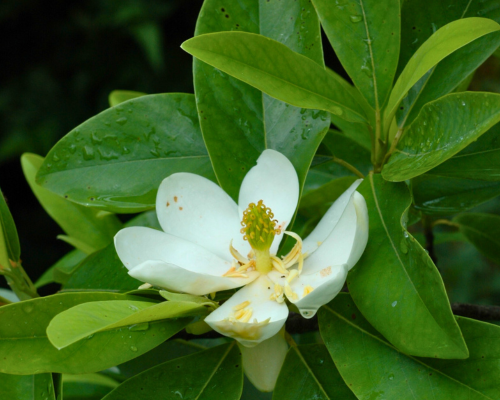Wildlife
Spring Trees and Shrubs that Pollinators Love!

Sweet Bay Magnolia (Magnolia virginiana)
Spring Blooms for Pollinators!
APRIL 27, 2023
One of the main benefits of planting native trees and shrubs is that they provide a food source and habitat for wildlife, including birds, mammals, and insects. These native species play a crucial role in our ecosystem and help to maintain a healthy balance of biodiversity.
Sweet Bay Magnolia (Magnolia virginiana) – This tree has fragrant white flowers that bloom in the spring and attract bees and butterflies. The Sweet Bay Magnolia is also a preferred host plant for the tiger swallowtail butterfly.
Sour Gum (Nyssa sylvatica) – This tree has inconspicuous flowers in the spring that attract bees and other pollinators. In the fall, the leaves turn a brilliant red color, making it a beautiful choice for adding fall color to your landscape.
Sassafras (Sassafras albidum) – This is a medium-sized tree that can grow up to 60 feet tall. Its unique, three-lobed leaves and aromatic bark make it a standout in any landscape. Fun fact: sassafras was once used to make root beer! The greenish-yellow flowers that bloom in the spring attract bees and butterflies, making it a valuable food source for pollinators.
Oak Leaved Hydrangea (Hydrangea quercifolia) – This deciduous shrub has showy white flowers that bloom in the late spring and attract bees and other pollinators. Its large oak-like leaves turn a beautiful bronze-red color in the fall.
Bittersweet (Celastrus scandens) – This woody vine can grow up to 20 feet long, adding stunning vertical interest to your landscape with greenish-yellow flowers. The bloom in the spring attracts bees and other pollinators. In the fall, the vine produces bright orange or red berries, a delectable food source for birds and other wildlife. Bittersweet is also a host plant for the hairstreak butterfly and the spiny oak-slug moth.